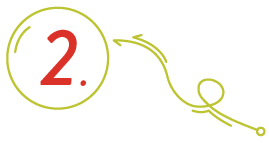
Dance as a form for people who can't dance.
Dance brought from structure and rhythm to the senses with the imprint of the geography and culture from which it was formed.
Dance without stakes and with exposure to the new for exploration and getting out of your comfort zone.
Focus on form and effort
as premises for emotional processing.
Focus on form and effort as premises for emotional processing.
![]() body posture awareness - practising presence for healthy posture
body posture awareness - practising presence for healthy posture![]() motor co-ordination and development of the movement alphabet (with or without a predefined music rhythm)
motor co-ordination and development of the movement alphabet (with or without a predefined music rhythm)![]() observing and developing non-verbal language
observing and developing non-verbal language![]() neuroplasticity and the formation of new neural pathways by learning new movements, steps and choreographies over and over again
neuroplasticity and the formation of new neural pathways by learning new movements, steps and choreographies over and over again![]() resisting the new in learning processes and observing the states that block them
resisting the new in learning processes and observing the states that block them![]() increase heart rate and train endurance
increase heart rate and train endurance![]() self-observation in working with oneself through tandem practice (the tandem created in dance and movement can be with a friend, a daughter, a boyfriend or a partner spontaneously met in the dance studio)
self-observation in working with oneself through tandem practice (the tandem created in dance and movement can be with a friend, a daughter, a boyfriend or a partner spontaneously met in the dance studio)![]() accessing states from which emotional connection and regulation is more natural
accessing states from which emotional connection and regulation is more natural![]() playfulness - constructive basis and nourishment for secure attachment
playfulness - constructive basis and nourishment for secure attachment![]() simultaneous activation of several areas of the brain and balancing the activity of the cerebral hemispheres through symmetrical and whole-body movements with short choreographed sequences and structured dance steps
simultaneous activation of several areas of the brain and balancing the activity of the cerebral hemispheres through symmetrical and whole-body movements with short choreographed sequences and structured dance steps![]() the form and the styles from which the choreographic and rhythmic pieces are inspired come from sports dance (samba, cha cha, rumba, paso doble, jive, waltz, tango, slowfox, quickstep)
the form and the styles from which the choreographic and rhythmic pieces are inspired come from sports dance (samba, cha cha, rumba, paso doble, jive, waltz, tango, slowfox, quickstep)
❗BUT WITHOUT the aim of these courses being to learn or practise dance sport.
Beyond fitness, the therapeutic side of fast-paced movement training is all about resilience.
![]() Resilience seen as an enlarged window of the limits of tolerance to effort, discomfort and exposure to novelty.
Resilience seen as an enlarged window of the limits of tolerance to effort, discomfort and exposure to novelty.![]() Resilience as a consequence of the emotional rebalancing gained from the consistent preoccupation with this physiological end-of-week shower
Resilience as a consequence of the emotional rebalancing gained from the consistent preoccupation with this physiological end-of-week shower![]() Resilience seen as an integrated part of the experience of stable and secure attachment relationships worked in the triangle of co-regulation - self-regulation - resilience.
Resilience seen as an integrated part of the experience of stable and secure attachment relationships worked in the triangle of co-regulation - self-regulation - resilience.
Practice Calendar
"FORM IN MOTION"

Future events

What they say
Contact me for enrolments